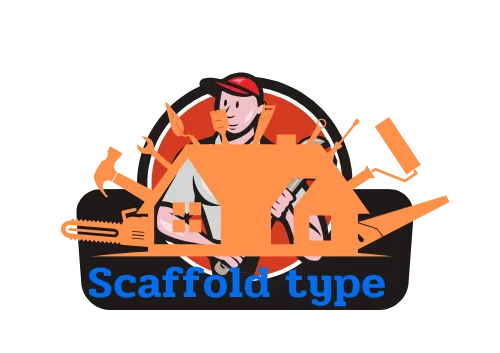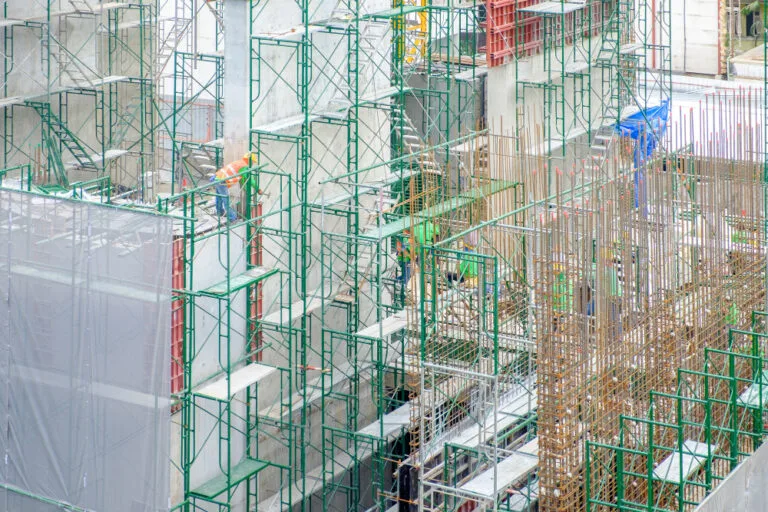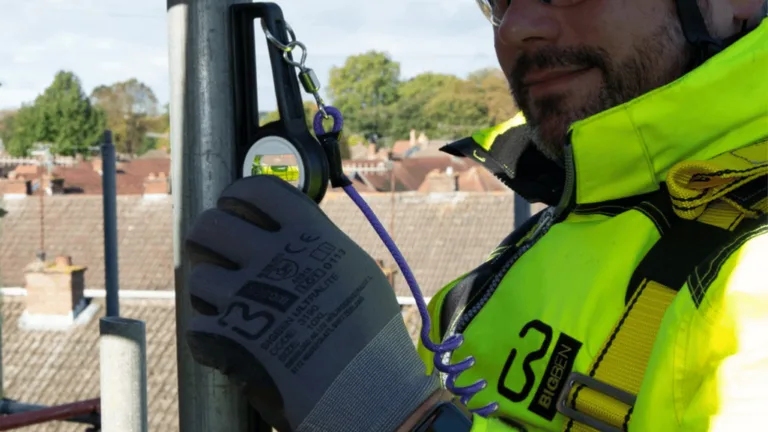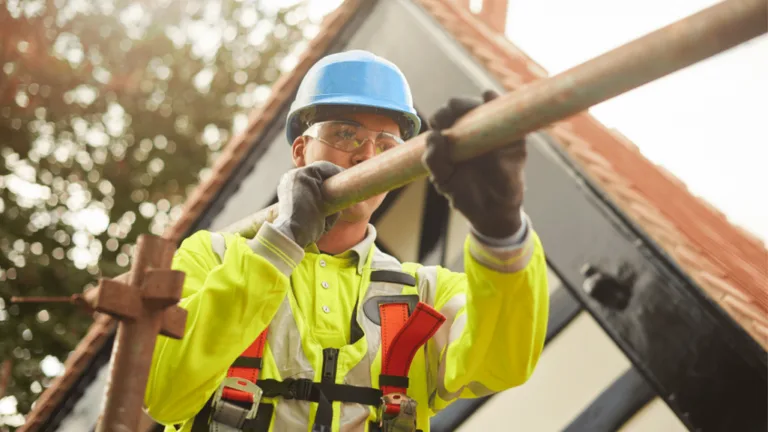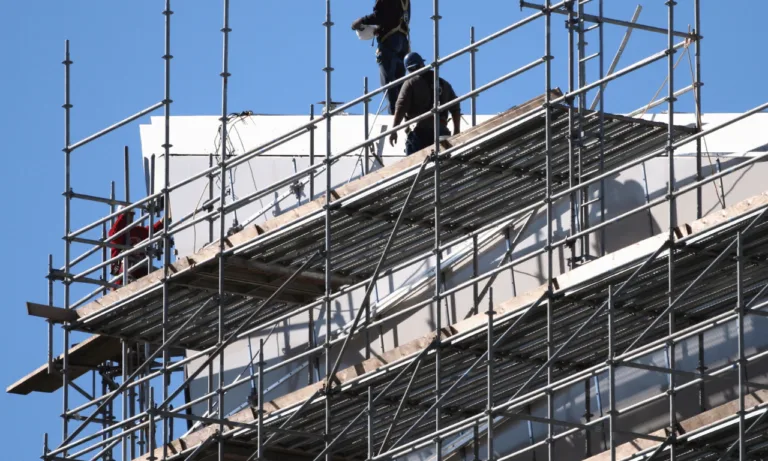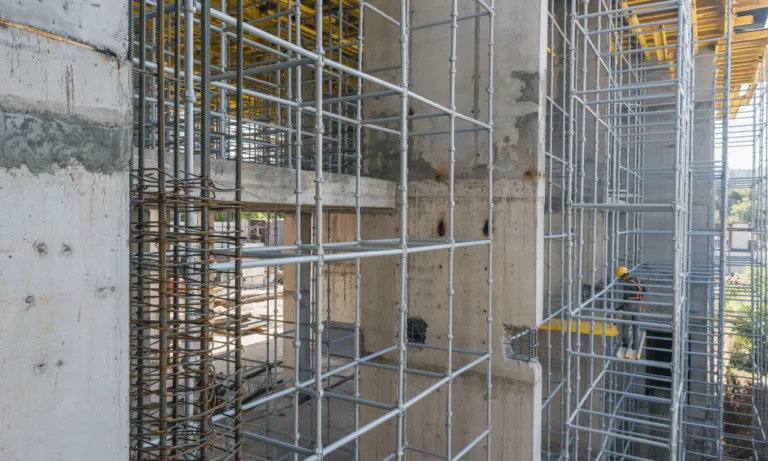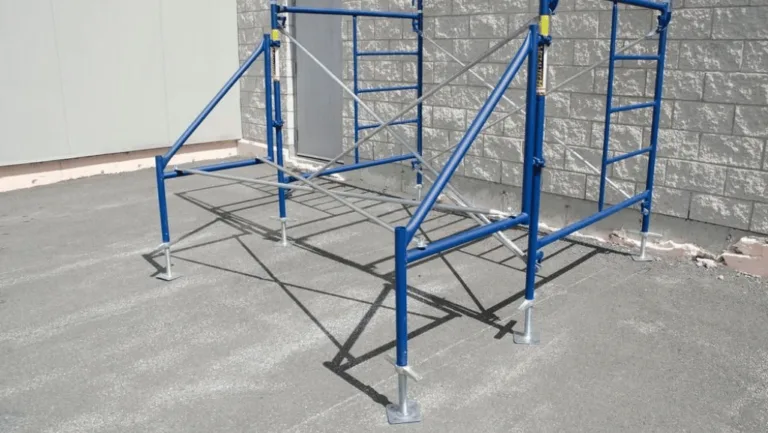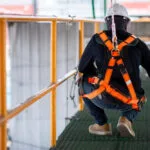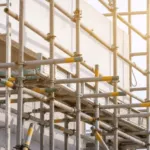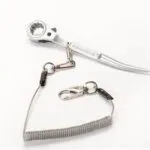Phone:
(+65)8319-0742
When it comes to construction projects, ensuring the safety and stability of scaffolding installations is paramount. Proper scaffolding anchorage plays a critical role in securing scaffolding and preventing accidents or collapses. Additionally, secure scaffolding installation enhances efficiency, allowing workers to perform their tasks with confidence and peace of mind.
In this article, we will explore the importance of secure scaffolding installation and highlight essential scaffolding anchorage solutions that guarantee optimal safety and efficiency on job sites. From understanding scaffold anchoring systems to exploring scaffold anchor hardware, we will provide valuable insights into the world of scaffolding anchorage.
Through a comprehensive examination of best practices for anchoring scaffolding and top-rated scaffolding anchors in the market, construction professionals will gain the knowledge and guidance they need to make informed decisions for their projects. Furthermore, we will dive into the crucial aspects of ensuring secure scaffold anchorage, including proper installation and maintenance techniques.
By the end of this article, readers will have a thorough understanding of the importance of scaffolding anchorage and the solutions available for secure installations. Armed with this knowledge, construction professionals can take proactive steps to enhance the safety and efficiency of their job sites, creating an environment conducive to successful project completion.
Key Takeaways:
- Secure scaffolding installation is crucial for the safety and efficiency of construction projects.
- Understanding different scaffold anchoring systems and scaffold anchor hardware is essential for making informed decisions.
- Best practices for anchoring scaffolding and utilizing top-rated scaffolding anchors contribute to secure installations.
- Proper installation and maintenance of scaffold anchorage ensure long-lasting and dependable performance.
- Enhancing safety and efficiency in construction projects requires a focus on scaffolding anchorage solutions.
Understanding Scaffolding Anchorage Systems
When it comes to erecting scaffolding for construction projects, the safety and stability of the structure are of paramount importance. That’s why understanding scaffold anchoring systems and their reliable anchor design is crucial for secure installations. In this section, we will provide a comprehensive overview of scaffold anchoring systems, explore the different types available, and emphasize the significance of reliable scaffold anchor design.
Scaffold anchoring systems are specifically designed to ensure the stability and structural integrity of scaffolding. These systems utilize various components and methods to securely anchor the scaffold to the supporting structure, preventing any unwanted movement or collapse. By effectively distributing the load and forces acting on the scaffold, a well-designed anchoring system provides a solid foundation for safe working conditions at height.
One essential element of a reliable scaffold anchoring system is the scaffold anchor itself. **Scaffold anchor design** plays a critical role in determining the overall strength and stability of the scaffolding structure. A well-designed scaffold anchor should be capable of withstanding the expected loads and forces, including wind, intense weather conditions, and dynamic loads caused by tools and workers.
There are various types of scaffold anchoring systems available, each catering to different construction requirements and site conditions. Some common types include:
- Ground anchors: These anchors are embedded in the ground or floor surface to secure the scaffold from below.
- Wall ties: Wall ties are used to connect the scaffold to the building structure for enhanced stability.
- Through-the-building ties: These ties pass through the building’s structure to provide additional support to the scaffold.
- Deadweight anchors: Deadweight anchors utilize counterweights to secure the scaffold without drilling or damaging the supporting structure.
Each type of scaffold anchoring system has its advantages and best applications. The choice of the anchor design depends on factors such as the structure’s type, height, load requirements, and environmental conditions.
When it comes to reliable scaffold anchor design, it’s crucial to consider factors such as anchor strength, durability, and ease of installation. High-quality scaffold anchors are often engineered to meet stringent safety standards, ensuring maximum load-bearing capacity and long-lasting performance.
A visually appealing and relevant image, illustrating a scaffold anchoring system, is displayed below:
Scaffold Anchoring System Comparison
Understanding the differences between various scaffold anchoring systems is essential for selecting the most appropriate one for your construction project. The table below presents a comparison of the different anchoring systems, highlighting their key features and applications.
| Anchoring System Type | Key Features | Applications |
|---|---|---|
| Ground Anchors | Securely anchor scaffold from below | Outdoor construction sites with stable ground conditions |
| Wall Ties | Connect scaffold to building structure | High-rise buildings and structures with robust walls |
| Through-the-Building Ties | Pass through the building structure for additional support | Renovation and refurbishment projects |
| Deadweight Anchors | Utilize counterweights for secure installation without drilling | Temporary scaffolding or situations where drilling is not feasible |
Best Practices for Anchoring Scaffolding

When it comes to ensuring the stability and safety of scaffolding installations, employing the best practices for anchoring is of paramount importance. By utilizing appropriate anchorage solutions for scaffolding and providing adequate scaffold base support, construction professionals can enhance the structural integrity and minimize the risk of accidents on job sites.
Choosing the Right Anchorage Solutions
Selecting the appropriate anchorage solutions for scaffolding requires a thorough understanding of the specific project requirements and environmental conditions. Factors such as wind loads, soil conditions, and the height of the structure play a crucial role in determining the ideal anchorage solution. Common options include ground anchors, tiebacks, deadweight anchors, and concrete anchorage systems.
Ensuring Scaffold Base Support
Providing adequate scaffold base support is essential for maintaining stability and preventing material and personnel accidents. A sturdy scaffold base serves as the foundation for the entire structure and distributes the load evenly to the ground. The base should be properly leveled, secured, and positioned on a stable surface to minimize the risk of tipping or collapsing. Additionally, deploying supportive tools such as base jacks, sole plates, and leveling screws can further optimize scaffold base support.
Regular inspections and maintenance are also critical to ensure the ongoing stability of the scaffold base. Construction professionals should regularly monitor the condition of the base components, including verifying the tightness of bolts and connections and checking for signs of wear or corrosion. In case of any structural issues or changes in environmental conditions, adjustments should be made promptly to maintain the integrity of the scaffold base support system.
By implementing these best practices for anchoring scaffolding and prioritizing scaffold base support, construction professionals can create a secure working environment that promotes efficiency, productivity, and most importantly, the safety of all personnel involved.
Exploring Scaffolding Anchor Hardware

When it comes to secure scaffolding installations, reliable scaffold anchor design plays a crucial role. The right scaffold anchor hardware ensures stability and strength, providing peace of mind for construction professionals and workers alike. In this section, we will delve into the various types of scaffold anchor hardware available and highlight their features and benefits in achieving safe and secure installations.
The Importance of Reliable Scaffold Anchor Design
Before exploring specific scaffold anchor hardware, it’s important to understand why reliable design is essential. Scaffold anchors serve as the foundation of the entire structure, offering stability and preventing dangerous tipping or collapse. By investing in high-quality anchor hardware, construction teams can significantly reduce the risk of accidents and ensure the safeguarding of workers and the project.
Different Types of Scaffold Anchor Hardware
There are several types of scaffold anchor hardware available, each designed to suit different project requirements and scaffold configurations. Let’s explore some of the commonly used scaffold anchor hardware options:
- Scaffold Eye Bolts: These are ratchet style bolts that are installed into pre-drilled holes in the structure, providing a secure attachment point for tie-backs and anchor ties. Scaffold eye bolts are known for their durability and versatility.
- Scaffold Wedge Anchors: This type of anchor is designed to securely attach scaffolding to concrete or masonry surfaces. The wedge anchor expands against the material for a strong grip, ensuring stability even in high winds or heavy loads.
- Screw-In Scaffold Anchors: Also known as helical anchors, these are screwed into the ground to provide stability for scaffolding structures. Screw-in anchors are particularly useful in areas with soft or unstable soil.
- Deadweight Scaffold Anchors: These heavy-duty anchors utilize counterweights to provide stability without the need for drilling or attachment to the building. Deadweight anchors are easy to install and remove, making them ideal for temporary scaffolding installations.
Benefits of Reliable Scaffold Anchor Hardware
Investing in reliable scaffold anchor hardware offers numerous benefits for construction projects:
- Enhanced Safety: Secure anchor hardware ensures the stability and structural integrity of scaffolding, reducing the risk of accidents and ensuring the safety of workers.
- Improved Efficiency: Reliable anchor hardware allows for quick and easy installation, saving valuable time on the job site and improving overall project efficiency.
- Long-lasting Durability: High-quality scaffold anchor hardware is built to withstand the rigors of construction sites, providing long-lasting durability and value for money.
- Compliance with Regulations: By using reliable scaffold anchor hardware, construction professionals can adhere to safety regulations and meet industry standards, mitigating legal and compliance risks.
For a visual representation, take a look at the following table, which summarizes the different types of scaffold anchor hardware:
| Scaffold Anchor Hardware | Features | Benefits |
|---|---|---|
| Scaffold Eye Bolts | Ratchet style bolts | Durable and versatile |
| Scaffold Wedge Anchors | Secure attachment to concrete or masonry | Strong grip, stability in harsh conditions |
| Screw-In Scaffold Anchors | Screwed into the ground for stability | Ideal for soft or unstable soil |
| Deadweight Scaffold Anchors | Counterweights for stability | Easy installation and removal |
By exploring the different types of scaffold anchor hardware and understanding their benefits, construction professionals can make informed decisions, selecting the right anchor systems for their specific project needs. When it comes to reliable scaffold anchor design, investing in high-quality hardware is a crucial step towards ensuring secure installations and maintaining a safe working environment.
Top-Rated Scaffolding Anchors in the Market
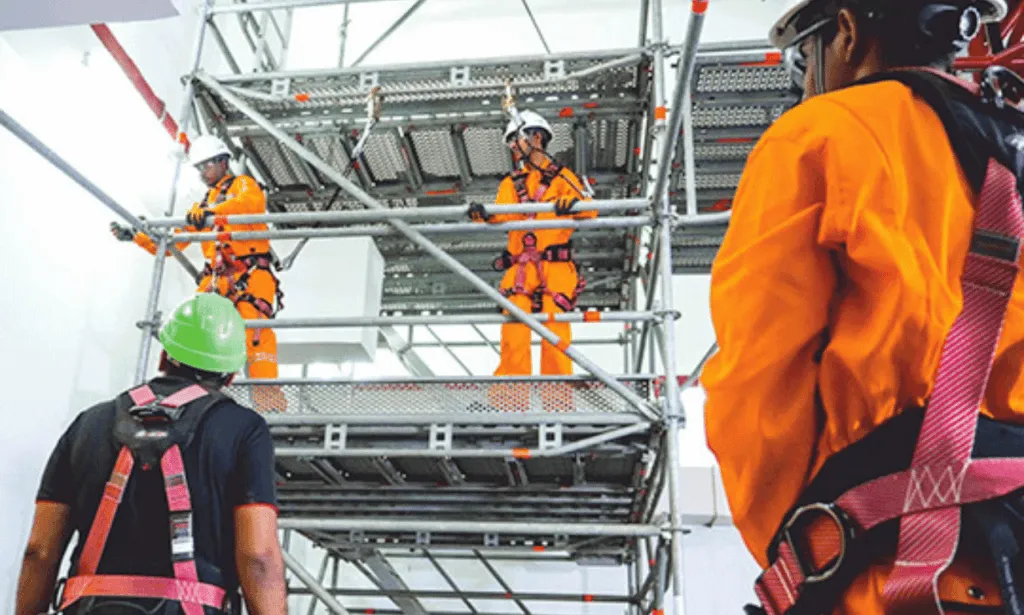
When it comes to scaffolding installations, having reliable and top-rated scaffolding anchors is crucial. These anchorage solutions for scaffolding play a vital role in ensuring the safety and stability of scaffolds, providing peace of mind to workers and project managers alike.
We have curated a list of top-rated scaffolding anchors in the market that have earned a reputation for their exceptional performance and reliability. Let’s take a closer look at these anchors and discover how they contribute to secure and reliable scaffold installations:
1. Brand X ProAnchor
Brand X ProAnchor is designed for optimal performance and ease of use. Its innovative design features high-quality materials and a robust construction to ensure maximum stability and security. With its strong anchoring capabilities, Brand X ProAnchor gives construction professionals the confidence to carry out their work safely and efficiently.
2. Company Y SecureAnchor
Company Y SecureAnchor is a trusted name in the industry, known for its top-rated performance and exceptional reliability. It offers a unique patented design that enhances the holding power of the anchor and provides superior resistance to lateral forces. With its versatility and ease of installation, Company Y SecureAnchor is a popular choice among professionals looking for durable and secure scaffolding anchorage solutions.
3. Manufacturer Z UltraGrip
Manufacturer Z UltraGrip is renowned for its advanced anchor technology and uncompromising quality. The UltraGrip anchor provides exceptional grip, even on smooth and slippery surfaces, ensuring a strong and stable scaffold installation. Its user-friendly design makes it easy to install and remove, saving valuable time on the job site.
These top-rated scaffolding anchors in the market exemplify the importance of investing in high-quality anchorage solutions for scaffolding. By choosing reliable and reputable brands, construction professionals can ensure the safety and durability of their scaffolding installations, creating a secure working environment for their teams.
Ensuring Secure Scaffold Anchorage: Installation and Maintenance
Proper installation and maintenance practices are crucial for secure scaffolding. Following best practices for secure scaffolding installation and scaffold anchorage is essential in order to ensure worker safety and prevent accidents on construction sites. In this section, we will provide step-by-step guidelines and tips to help you achieve long-lasting and dependable scaffold anchorage.
Secure Scaffolding Installation
- Start by inspecting the location where the scaffolding will be installed. Ensure that the surface is stable, level, and capable of supporting the weight of the scaffold and workers.
- If necessary, consult with a structural engineer to determine the appropriate anchoring method and load capacity for the specific project.
- Choose the right scaffolding system and components for the job. Select high-quality scaffold anchors that are designed for secure installations.
- Follow the manufacturer’s instructions for assembly and installation. Make sure all connections are secure and stable.
- Use proper bracing and tie-offs to increase stability and reduce the risk of scaffold movement or collapses.
- Regularly inspect the scaffolding for any signs of damage or wear. Conduct inspections before each use and address any issues immediately.
Maintenance of Scaffold Anchorage
Regular maintenance is essential to ensure the ongoing integrity and safety of scaffold anchorage. Follow these best practices:
- Inspect the scaffold anchor hardware regularly for signs of wear, corrosion, or damage. Replace any worn or damaged components immediately.
- Keep the anchor points clean and free from debris that may hinder proper installation or compromise stability.
- Ensure that all connections are tight and secure. Regularly check and tighten bolts or fasteners as needed.
- Perform regular load tests to verify the stability and load-bearing capacity of the scaffold anchorage.
- Provide proper training to workers on the importance of scaffold anchorage and the correct procedures for installation and maintenance.
By following these best practices for secure scaffolding installation and scaffold anchorage maintenance, you can minimize the risk of accidents and ensure a safe working environment for your construction team. Remember, safety should always be the top priority when working with scaffolding.
| Scaffold Anchorage Best Practices | Benefits |
|---|---|
| Inspect the installation site | Ensures stability and load-bearing capacity |
| Choose high-quality scaffold anchors | Enhances secure installations |
| Follow manufacturer’s instructions | Ensures proper assembly and stability |
| Utilize bracing and tie-offs | Increases stability and reduces movement |
| Regularly inspect and address issues | Prevents accidents and ensures ongoing safety |
| Inspect anchor hardware regularly | Identifies wear or damage for prompt replacement |
| Keep anchor points clean | Ensures proper installation and stability |
| Tighten connections | Maintains stability and integrity |
| Perform regular load tests | Verifies stability and load-bearing capacity |
| Provide training to workers | Ensures understanding of proper procedures |
Conclusion
In conclusion, this article has provided valuable insights into the importance of scaffolding anchorage and the solutions available for secure installations. By following best practices and utilizing reliable scaffold anchor systems, construction professionals can enhance safety and efficiency on their job sites.
FAQ
Why is secure scaffolding installation important?
Secure scaffolding installation is crucial for the safety and efficiency of construction projects. It helps prevent accidents and reduces the risk of scaffold collapse, protecting workers and bystanders from potential injuries.
What is a scaffold anchoring system?
A scaffold anchoring system is designed to secure scaffolding to the structure it is erected against, providing stability and preventing movement or sway. It typically includes anchor points, tie-offs, and other hardware to support the scaffold and prevent it from becoming dislodged.
What are some reliable scaffold anchor designs?
Reliable scaffold anchor designs include frame scaffolds with built-in anchor points, as well as external anchor systems that use clamps or bolts to secure the scaffold to the building or structure. These designs ensure a strong and stable connection between the scaffold and the anchorage point.
What are the best practices for anchoring scaffolding?
When anchoring scaffolding, it is essential to use appropriate anchorage solutions such as tie-offs, clamps, or bolts that are designed to withstand the expected loads. Additionally, proper scaffold base support, including level ground and secure footings, should be ensured to maintain stability and prevent tipping.
What types of scaffold anchor hardware are available?
Scaffold anchor hardware includes items like anchor bolts, clamps, couplers, and tie-offs. These hardware components are specifically designed to secure scaffolding to the building or structure and vary in size and design to accommodate different scaffold types and configurations.
What are some top-rated scaffolding anchors in the market?
Some top-rated scaffolding anchors in the market include the XYZ Scaffold Anchor and the ABC Secure Tie-off System. These anchors have been highly regarded for their reliability, ease of use, and ability to provide secure scaffold installations in various construction environments.
How can I ensure secure scaffold anchorage during installation and maintenance?
To ensure secure scaffold anchorage, follow the manufacturer’s instructions for installation, including proper placement of anchor points and attachment of tie-offs. Regular inspections and maintenance should also be conducted to identify and address any signs of damage or deterioration in the anchorage system.
